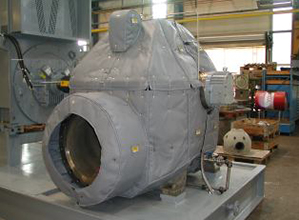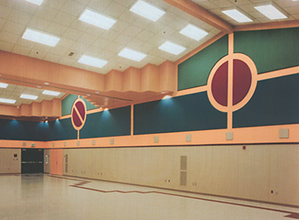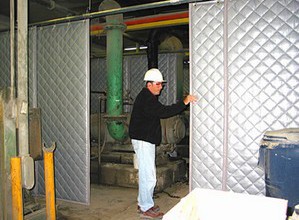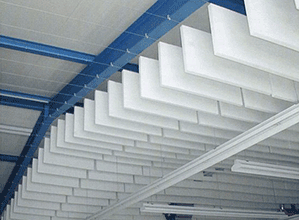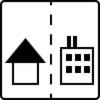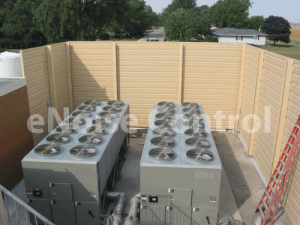Understanding Sound Barrier Wall Design
Sound barriers play an important role in controlling the amount of noise that escapes from a noisy area. From sky-high walls fencing the length of a busy freeway to barricades surrounding an industrial plant, their composition and functionality vary. Though they are most often associated with blocking heavy traffic noise on roadways, they have many other uses.
The make-up and effectiveness ratings of sound barriers is complex. It takes some effort to comprehend the equations, averages, and measurements needed to determine if a barrier will work as intended.
As such, the U.S. Department of Transportation’s Federal Highway Administration has closely studied sound barrier walls over the course of several decades. The FHA has documented the design, assessment, and implementation of these sound walls.
What kind of sounds do barrier walls block?
As mentioned, sound barrier walls are often erected along highways to drown out noise leaking into residential and metropolitan areas. This noise is caused by the incessant hum of tires against pavement and large trucks carrying heavy loads. These noise sources combine to create quite a din.
Additionally, sound barrier walls might be installed to deaden the sounds of industrial facilities. Depending on the type of work being conducted at such a location, noise pollution can reach alarming levels. This is not only harmful for humans who may reside and work in the area, but is also harmful to local natural habitats.
How do sound barriers work?
Sound barriers are not all created equally or for the same purpose. While their installation and uses differ, so do their methods of blocking sound.
Generally speaking, all noise barriers reduce sound in 1 of 4 ways: absorbing it, transmitting it, reflecting and redirecting it, or diffracting it by causing the sound to travel a longer distance and further dissipate over that distance.
Sound Absorption Barriers
Barriers that absorb sound retain the majority of the sound directed at them, though no absorption barriers are capable of absorbing 100% of noise.
Sound absorption levels are measured, rated, and recorded in terms of their Noise Reduction Coefficient (NRC). An NRC is calculated using an object’s averaged Sabine Absorption Coefficient (Sab) measurements at 250, 500, 1000, and 2000 hertz (Hz). The Sab is a test that determines the speed of sound decay without the help of any barrier materials.
Surprisingly, NRC measurements have a scale from 0 to 1. A rating of 0 indicates that the barrier will reflect all sound directed at it while a rating of 1 indicates that the barrier will absorb all sound. On average, sound absorption barriers have NRC rates between 0.6 and 0.9.
Sound Transmission Barriers
Transmission barriers also absorb sound. However, instead of swallowing those frequencies, they allow the sound waves to pass through the barrier at a lower decibel level. This effectively muffles and lessens the noise. This sound-loss process is expressed in terms of Transmission Loss (TL).
These barriers can be constructed from a myriad of different materials. Common materials include concrete, steel, aluminum, wood, and glass. Their physical composition plays a big role in their effectiveness and longevity. For example, though they are extremely effective, wood barriers tend to have shorter lifespans due to their vulnerability as a natural material.
Sound Reflecting Barriers
Sound reflecting barriers have NRC ratings of 0 and literally reflect frequencies back from whence they came. Occasionally these barriers will direct the frequencies to a different path. These barriers are often found in pairs along stretches of highway backing up to residential areas. They effectively retain the sound within the roadway and reduce frequency transmission and diffraction.
Reflecting barriers can cause some issues, however, when set up in this manner. One barrier may have negative effects on the other’s ability to rebound sound and both may be ineffective due to the amount of noise frequencies bouncing back and forth between the structures.
When arranged facing one another, reflecting barriers should be further equipped with absorption material on one side of the pair or both. Alternatively, install barriers well apart from one another – a distance equivalent to a minimum of 10 times their height. Positioning facing barriers slightly outward from one another may also lessen the sounds bouncing between them.
Sound Diffracting Barriers
Sound diffracting barriers literally bend sound waves around a structure. Much like moving water will leak and lap over the edges of a barrier, sound seeps around the top and side edges of the erected sound wall. However, unlike water, the direction of the diffracted noise does not maintain a consistent path once it has cleared the barrier.
Low frequency sounds (sounds with long wavelengths) tend to drop quickly – think about how water would drop due to gravity. As such, diffracting barriers may not be the best choice for blocking noise near places like residential communities.
High frequencies, on the other hand, do not drop the way their low frequency counterparts do on account of their short wavelengths. Higher frequency sounds will edge over the barrier and dissipate away from the area being protected. As such, diffracting barriers tend to work well in settings with high frequency noise issues.
Conclusion
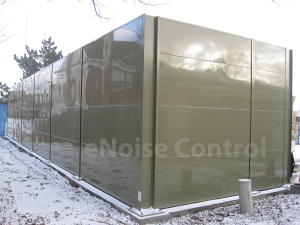 With the right design and application, barrier walls can be immensely efficient tools for blocking sound from a noise source. Don’t let their intimidating equations scare you – get help to find the right noise solution for your application.
With the right design and application, barrier walls can be immensely efficient tools for blocking sound from a noise source. Don’t let their intimidating equations scare you – get help to find the right noise solution for your application.
Ready to get the facts on what type of barrier is right for you? Call or e-mail eNoise Control with questions on your sound barrier wall project. We will be with you every step of the way. You can also read about how to calculate the height for a sound wall.
